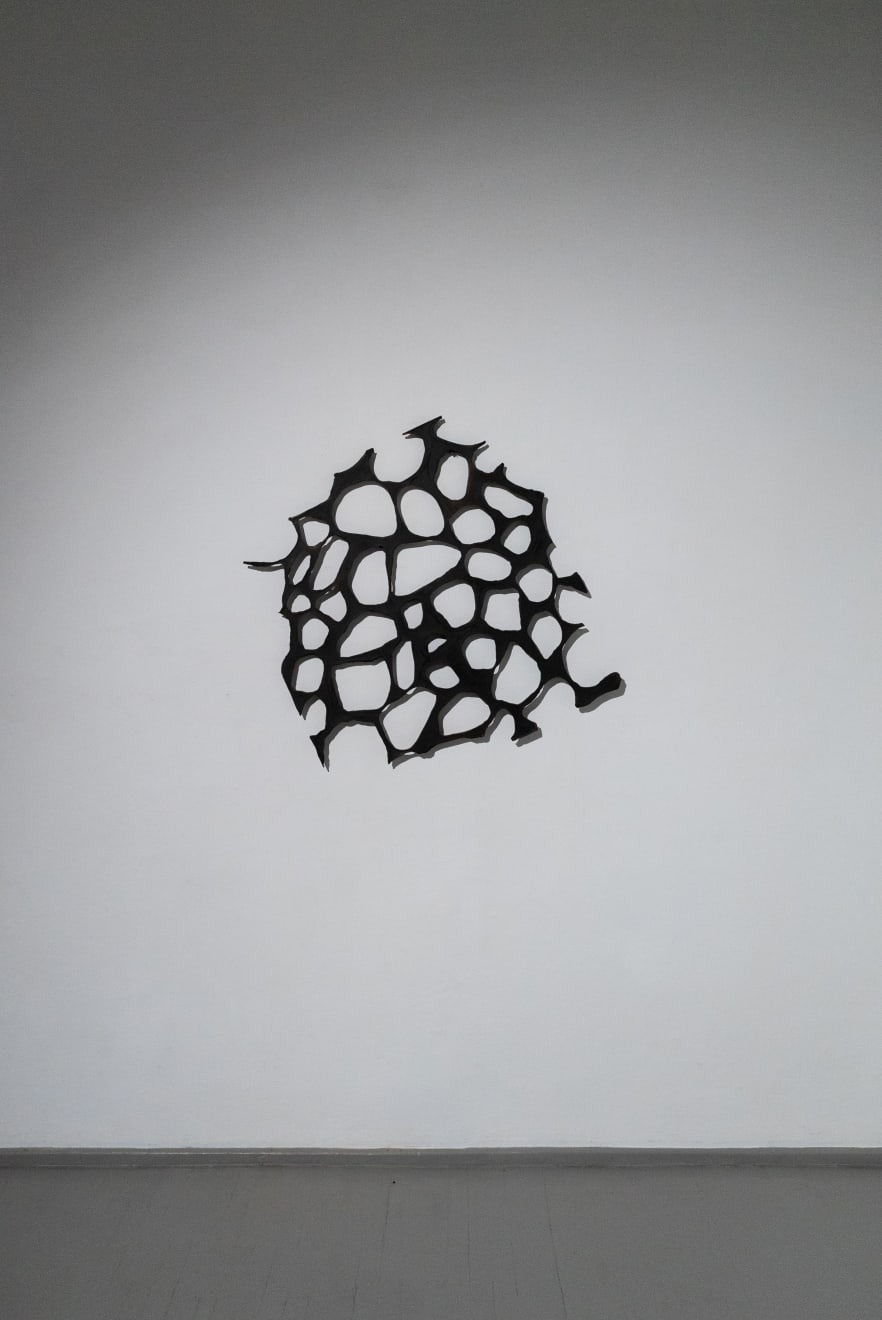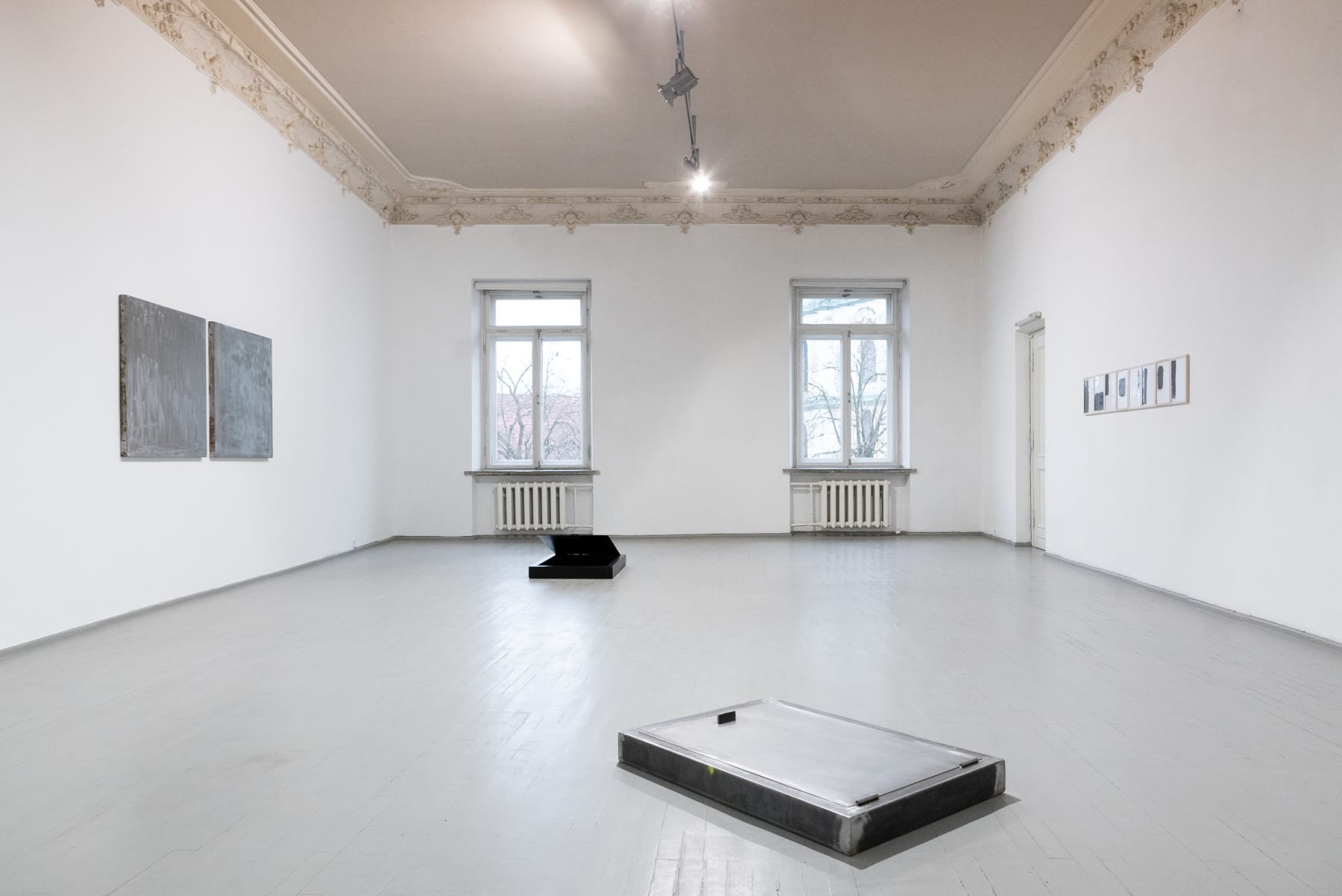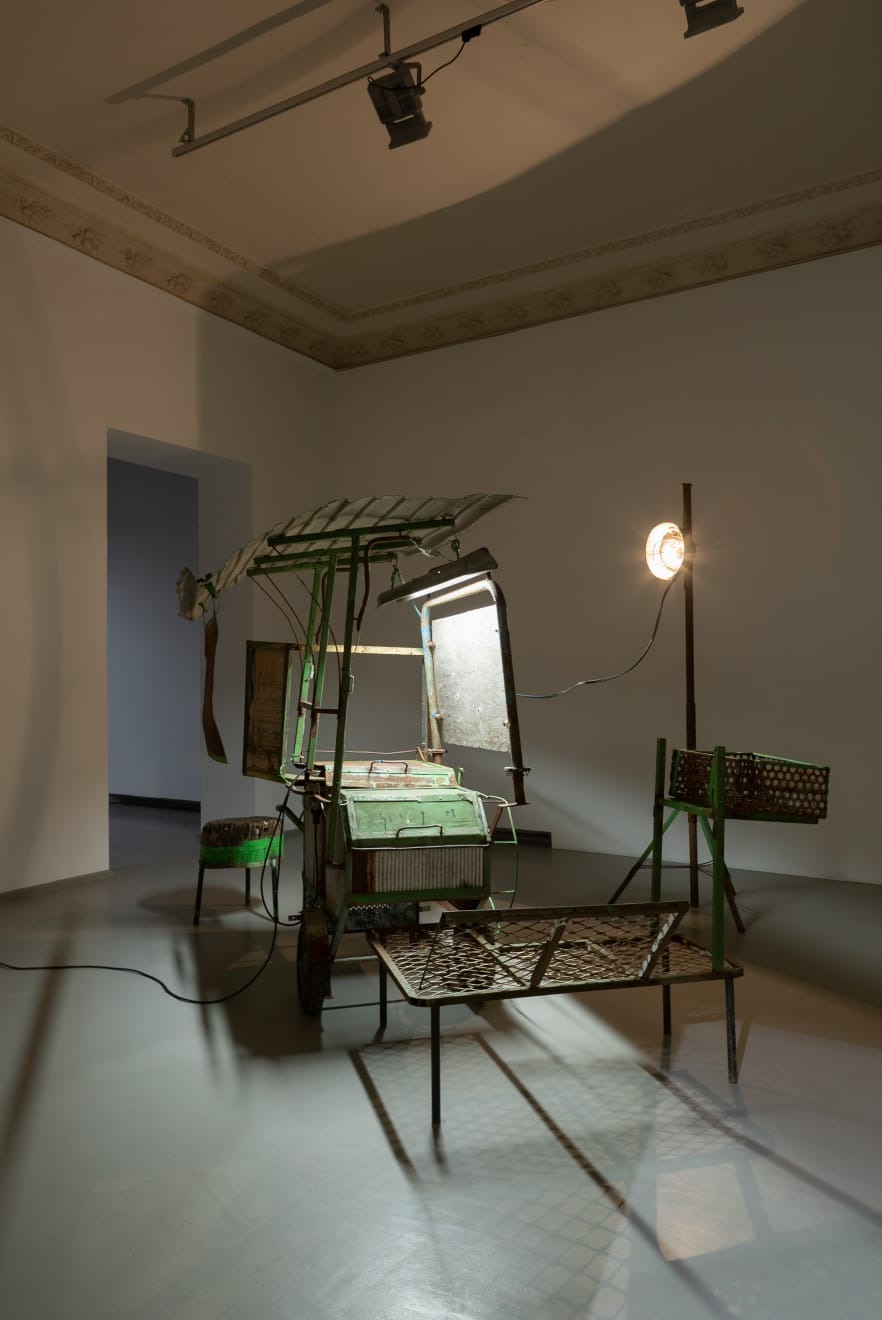
I think we feel like we are in a war
On the group exhibition An Unfinished Project at Gallery Vartai
Jolita Jankuvienė
The group exhibition An Unfinished Project (on view until March 31) at Gallery Vartai in Vilnius seeks to whirl our conventional divisions of time, articulating the role of the past as that which does not pass – as an ongoing event crossing through the present towards the future. The problematised time tenses of the exhibition are manifested in different ways. Some of the works convey a sense of anticipation and are experienced as a sign of future occurrence; some create a certain image of the past which they reenact, bringing it back to life; others imply movement, addressing and practicing a cyclical approach to time, or appear in the “here and now” as an act of commemoration and revivification of traumatic moments in history.
An Unfinished Project brings together artists of various contexts and nationalities – Lithuanian, German, Belgian, and Israeli (Willem Boel, Konstantinas Bogdanas, Andreas Golinski, Yeal Hersonski, Ariel Schlesinger, Peter Wächtler) – to participate in an orchestrated scenario reflecting on historical and material reality, while amounting to an alternative universe.
Arterritory presents the following short conversation with the curator of the exhibition, Ghent-based independent curator and writer Ory Dessau.

You are the curator of An Unfinished project. What is the message you want to convey to visitors of the exhibition?
Maybe “message” is too strong. My aim is to create and organise an experience. This experience is, first of all, cognitive, but also sensual. I think the exhibition establishes a sense of anticipation – the effect of the works amounts to a scene in which the viewers become alerted, as if prepared for something to happen, or happen again. What, exactly, it is not immediately clear, but the feeling of unconventional temporality – when the future of the present might be the recurrence of an unclear past event – was important in the conception of the exhibition.
An Unfinished Project, installation view. Courtesy of Galerija Vartai. Photo: Laurynas Skeisgiela
What is most important for you as a curator and for you as a person, being a part of the history being discussed in this exhibition?
You rightly mentioned the role of historical memory in the exhibition, since the unconventional temporality we sought to achieve is not just structural, but also concrete; it refers to parts of history as enduring, persistent. It approaches the past, and specifically the chronology of World War II as that which didn’t really pass – as a continuous event whose effects we are still processing.
As a curator, I see myself as a radical conservative curator. In Hebrew, “radical conservative” sounds better than in English. My role as a curator is to provide an interpretive key for each single work as well as for each body of works by the artists participating. It’s important how you keep the autonomy of a single work while at the same time creating some kind of narrative using works by different artists.

What about your perspective as a person?
As a person, I guess my aim is to remain as open as possible and to be able to continuously experience the world in a poetic way.
The artists are from different countries. What is their approach to the theme?
I don’t believe in pure abstract things – everything has a connection to the circumstances in which it was made. Everything in the world addresses and evokes particular circumstances, which are partly rational, partly geographical, partly cultural, ethnic, etc. But, I also believe there is something irreducible, a fundamental core that is universal within valid artworks and art practices. The exhibition speaks about human conditions in general – human emotions in an ahistorical way that is beyond historical, national and cultural confinements – but it is also tied to a specific historical background.

How did Yael Hersonski’s A Film Unfinished inspire naming the exhibition An Unfinished Project?
It’s a radical film on different levels. First, it is based on a film that was made by Nazis in the Warsaw Ghetto. It undermines the difference between documentary and fiction. The original footage was a sort of fake documentary film – a documentary of life that is violently staged. In this sense it calls for an in-depth analysis, prior to which it can never be concluded.

You have curated very many different exhibitions. What are the most important elements and details in the exhibitions that you manage? What is the main thing that your exhibitions must include?
First of all, there is a need to discover something new, something that has still not been said about each of the artworks and the participating artists. The second thing is to keep the autonomy of the artwork and, while doing so, anchor it in a specific historical-social context. On the one hand, I try to give myself to the artwork – devote myself to the object; but on the other hand, I then try to articulate how this very hermetic discourse of each work or each oeuvre can make us think about the world, about history, and about the present in a new way.

What has been the most memorable or important exhibition that you’ve done?
As the great musician Duke Ellington answered when asked about his best musical piece, I would say that the most important exhibition is the next exhibition I will curate. I dedicate myself fully to the given project. Now we have the project in Vilnius, in the contemporary art gallery Vartai. This place allows and facilitates the production and presentation of contemporary art. I’m intrigued by the historical conditions of an exhibition such as An Unfinished Project in the distinguished gallery Vartai, whose location itself is a part of many histories. There are untold stories that we can unfold to the audience. I see a liveliness in Vilnius, not only due to recent success of the Lithuanian pavilion at the 2019 Venice Biennale, but also in the strong energy in general that attracts me to this city.

What kind of personalities did you discover among the artists? What is the process of communication with them – from your first ideas to the implementation of the exhibition?
Artists understand artists, but they also understand curators and vice versa. With the artists I had already worked with we had established a firm, trust-based relationship – a knowledge of each other. When I come with an idea, it’s not just an improvisation – it’s a result of something very deep so that the artist can immediately get the idea and then they usually follow me.

What are the challenges regarding the implementation and organisation of exhibitions during the pandemic?
The question of what will be the consequences of this pandemic is a big one, especially when thinking about art as a collective act of communication. How can we still think about interactive art, of art as social structure, when we can no longer visit an exhibition together? After this pandemic, will art be experienced collectively in a social context, or experienced individually?

You are very close to the artists. How do they feel in this pandemic?
I think we feel like we are in a war. We can’t look at it from the outside, from a distance. We are inside the event, during the battle. I think artists are struggling just to keep the ball rolling, and they will understand the consequences of this pandemic only after it is over. I think museums and art institutions should shift from the question of audiences to the function of the artists. I think we do not have to think about how to make the exhibitions public, but we should think about this like an experimental space for artists. And then the artist will decide what to do with it and how it should be viewed.

Maybe their studio or home will become a new gallery?
The gallery will become their studio, not the other way around.
